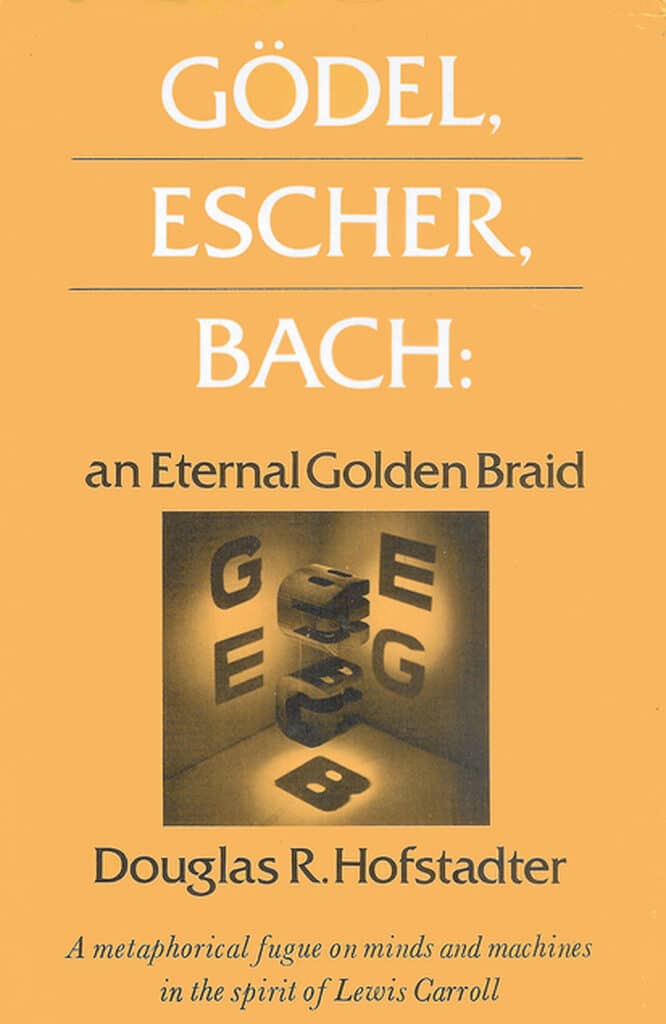
Douglas Hofstadter’s 1979 book, Gödel, Escher and Bach: An Eternal Golden Braid, won a Pulitzer Prize for its creative exposition of some fundamental constructs of mathematics and computer science that pervade many domains of human investigation. In particular, the author reveals how the concepts of recursion, randomness, and self-referencing pervade mathematics, computer science, music and art. In his discussion of recursion, he anticipates the modern development of artificial intelligence, stating (p. 152):
Instead of just considering programs composed of procedures which can recursively call themselves, why not get really sophisticated, and invent programs which can modify themselves–programs which can act on programs, extending them, improving them, generalizing them, fixing them, and son on? This kind of “tangled recursion” probably lies at the heart of intelligence.
To develop concepts such as self-referencing–a concept that is at the root of the Russell paradox and Gödel’s Theorem–Hofstadter creates extensive dialogues between Achilles and the Tortoise, in the tradition of Lewis Carroll. He aims to illustrate how the music of Johann Sebastian Bach, the art of Maurits Escher, the completeness theorems of Kurt Gödel and a host of other creative art forms are intimately connected by a few overarching cognitive processes.
However, many people have found Hofstadter’s book to be a difficult read. Making these connections among diverse fields of study requires that the reader have some depth of knowledge about the structure of Bach’s fugues, the tessellations and perspective paradoxes of Maurits Escher and the implications of Gödel’s Theorem, as well as an understanding of the underlying concepts of recursion, self-referencing and randomness.
Very few people understand the deep implications of Gödel’s completeness theorems and only a few of them also have a depth of knowledge of the patterns in Bach’s music or familiarity with Escher’s infinitely recursive images. Consequently, connecting these fields is beyond the grasp of many readers.
In his development of a “proof” of Gödel’s completeness theorems, Hofstadter attempts to give a kind of heuristic proof, perhaps in an attempt to appeal to the lay reader who may be repelled by the typical formalism of mathematical deduction. However, for someone trained in mathematics, the proof may seem meandering and suggestive rather than tight and rigorous.
In attempting to model self-referencing and recursion in his own discourse, Hofstadter embeds arguments within nested arguments like a set of Russian dolls. This tends to obscure the underlying ideas and demands a strong focus from the reader.
Hofstadter is clearly a highly intelligent individual, and his book is a stimulating read for someone with the background to assimilate the ideas into a coherent whole. Consequently, many people found Hofstadter’s book to be a wonderful read, while others found it to be tough sledding. Hofstadter’s playful writing style belies the depth of the concepts prerequisite to an understanding of the content. Perhaps, as Karl Gauss once asserted, “When dealing with the transcendental, one must be transcendentally clear.”
